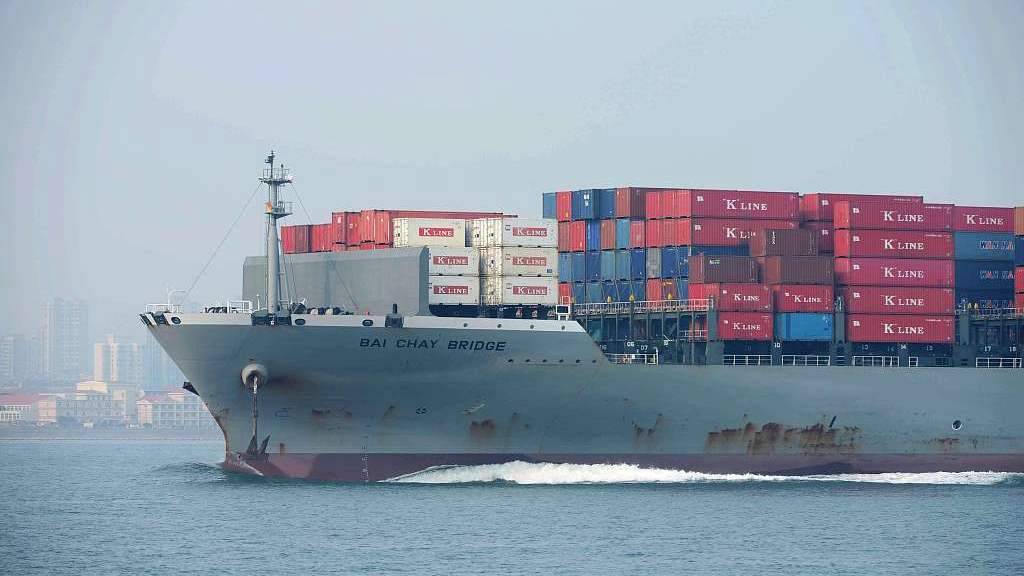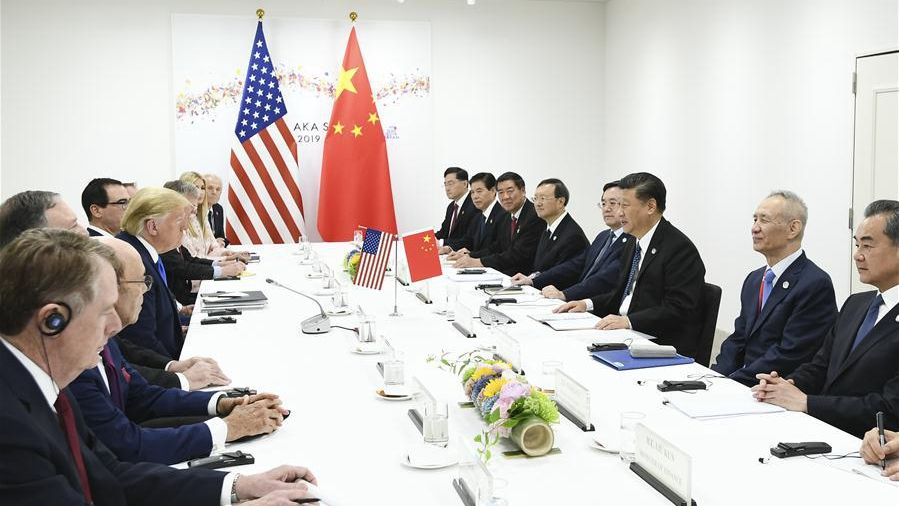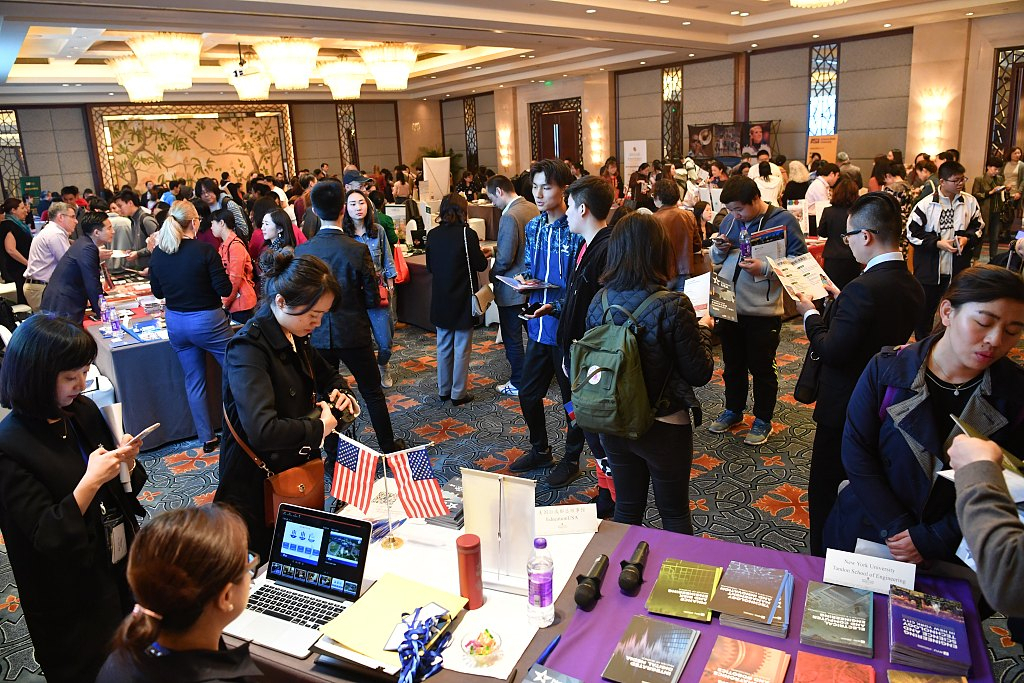

Editor's note: William Jones is the Washington Bureau Chief for Executive Intelligence Review and a non-resident fellow of the Chongyang Institute for Financial Studies, Renmin University of China. The article reflects the author's opinions, and not necessarily the views of CGTN.
The meeting of U.S. President Donald Trump and Chinese President Xi Jinping on June 29 on the sidelines of the Group of 20 (G20) summit in Osaka helped to deflate the tensions in the U.S.-China relations that had been building lately as a result of more strident rhetoric coming from some members of the Trump Administration. In particular, Secretary of State Mike Pompeo’s rather outlandish characterization of the Belt and Road Initiative as “shackles” for those countries that participated in it raised some very strong comments from the Chinese Foreign Ministry.
The meeting between the two presidents, however, has reasserted the fact that this is a Trump administration, and statements made by those under him do not always represent the views of the President.
While the meeting did not resolve all of the difficult issues involved in the trade talks, it did lay out a genuine pathway for moving forward. Firstly, President Trump said that the trade negotiations, which had temporarily stalled over some still unresolved and thorny issues, would continue.
In addition, he indicated that the restrictions that had been placed on the Chinese telecom firm, Huawei, largely on the pretext of “national security” would be eased and the question of Huawei made a subject of discussion at the trade talks, separating any national security concerns from the role of Huawei as a trade issue with the U.S. And more importantly he lifted the restrictions that had been placed on American suppliers of vital equipment to Huawei, allowing this vital supply chain for the Chinese telecom manufacturer to continue unabated.

Chinese President Xi Jinping meets with U.S. President Donald Trump in Osaka, Japan, June 29, 2019. /Xinhua Photo
President Trump also responded positively when President Xi took up the growing concerns among Chinese students about studying in the U.S. given the intensive media campaign alleging that Chinese students and researchers were “stealing technology” as well as the targeting the collaboration of the Confucius Institute, the chief entity for cultural exchange with American universities.
President Trump said that he would welcome more Chinese students to study at U.S. institutions and would even take measures to make it more attractive for them to remain in the U.S. and to work for U.S. companies.
At the press conference following the G20, President Trump went so far as to say that he felt that the U.S. and China could develop a “strategic relationship,” a far cry from the recent Pentagon documents that characterized China as “strategic rivals”. President Trump’s characterization no doubt raised a few eye-brows among some of his closest advisers like National Security Adviser John Bolton and Pompeo, who have done their best to describe China as a “strategic rival”, indeed, often characterizing it as the most important of such “rivals”. But the statements made by the President underlined the fact that it is he, not they, who is in charge.
How things will proceed from here is still not clear. The trade negotiations will be taken up again and the same difficult issues will face the negotiators. But President Trump has clearly indicated that he does want an agreement, which should give an added impetus to the negotiators to find a solution to the remaining problems. Trump also made it clear to President Xi that he has no intention of harming China or stifling its development.

A U.S. university fair in Chengdu, southwest China's Sichuan Province. /VCG Photo
The fact that the rather voluble China-hawk, Peter Navarro, who had been allowed a seat at the end of the table during the talks between the presidents, had no comment after the meeting, probably indicates that he was not entirely happy with the way things were going.
Leaving Osaka for a trip to the Republic of Korea, President Trump announced that he would be meeting with the Democratic People's Republic of Korea (DPRK) leader, Kim Jong Un at the Demilitarized Zone, signaling the restart of US-DPRK discussions on denuclearization, an issue which had also been stalled after the unsuccessful Hanoi Summit.
In this all-important issue, China has been playing a key role. President Xi’s recent visit to Pyongyang prior to the Osaka G20 no doubt helped assure the DPRK leader that he had the backing of his most important ally and neighbor in moving forward on the issue if circumstances permitted. And the successful summit between the two presidents at Osaka probably indicated to Kim that there was an opportunity for getting these talks back on track. So when President Trump, to the surprise of everyone, announced at his press conference that he wanted to meet Kim at the DMZ on June 30, the response from the DPRK leader was almost immediate.
This succession of events clearly shows that the world can begin to move in the direction of a more stable and harmonious one. In the run-up to Osaka, there was a clear danger of serious economic dislocations coming out of the U.S.-China trade dispute, and there was a clear danger of war in the Middle East with the growing conflict between the U.S. and Iran.
President Trump prevented the latter by calling off a planned strike against Iran in retaliation for the shooting down of a U.S. drone. And in his meeting with President Xi, the two have effectively defused the “ticking time-bomb” represented by a looming trade war. If these two nations do indeed succeed in establishing something close to a “strategic relationship” there is no telling the amount of good that can come out of it for the world as a whole.
(If you want to contribute and have specific expertise, please contact us at opinions@cgtn.com)

Copyright © 2018 CGTN. Beijing ICP prepared NO.16065310-3
Copyright © 2018 CGTN. Beijing ICP prepared NO.16065310-3